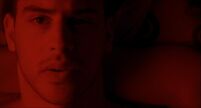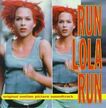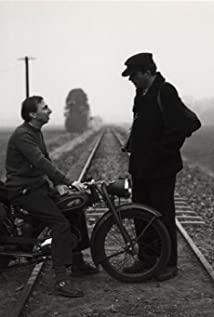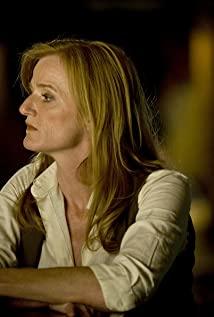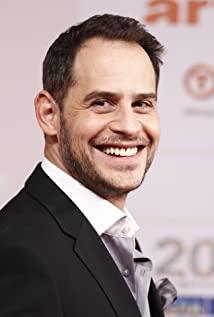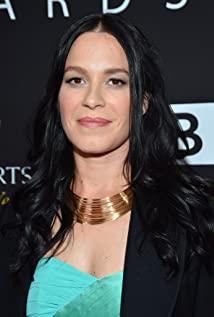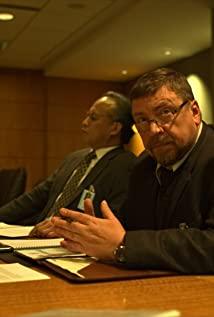-From Laura Run to see the novel structure of movie lens language
"Film Reading and Comprehension " final thesis
lecturer: Wu Qingqing
Class: School of Communication Class 06 Radio and Television Class
Student ID: 129012006051
Name: Wang Shiyuan
[Content Abstract]
"Lola Run "Is director Tom. An exploratory movie that Tom Tykwer tried to make. In the movie, Laura runs desperately to save her lover. The film has a fast pace, and tried to combine with computer games and animations to produce fresh visual effects. It also uses a variety of montage forms to make the content of the film rich and suspenseful, feasting the audience with frequent and gorgeous lens combinations. And the alternative multi-line narrative are the outstanding features of this film that distinguish it from ordinary movies.
[Keywords]
Lens combination multi-line narrative transition skills repeat montage
[Text]
Berlin, Germany, the underworld Romany called his girlfriend Laura, Manny told Laura: He lost 100,000 marks. After 20 minutes, if the 100,000 mark is not returned, he will be executed by the underworld boss.
In order to get 100,000 marks and rescue Manny, Laura ran desperately within 20 minutes. At the same time, Manny kept calling and borrowing money in the phone booth.
The film shows the three processes and three results of Lola running, Lola looking for money to rescue Manny.
First run: Lola did not borrow money, Lola and Manny rob the supermarket, Lola was killed by the police.
Second run: Laura grabs money from the bank. Manny was hit and killed by an ambulance.
The third run: Laura wins at the casino and Manny retrieves the lost money. Laura and Manny became rich.
(1) Flexible use of multi-line narrative and transition skills.
Such a story setting is destined to have an excellent multiple-choice narrative structure. In the short period of 1 hour and 16 minutes of the film, due to the fact that her boyfriend lost 100,000 marks as an introduction, Laura performed three seemingly related but completely independent runs, and each run experienced Many repetitive events and many variables have occurred. These small changes affect each other, connect, and weave different destinies. It uses three sections to describe the three possibilities of choice and destiny. The existence of the section is the first time that the audience clearly counts. The fictional story really becomes the result of narrative behavior. Space can be changed, time can be reversed, multiple possibilities of historical development are established, and the film becomes Bor "Garden with bifurcated paths" described by His Majesty Hess.
The structure of the film is obviously three big pieces. The narratives of the three big blocks are independent of each other. The three big blocks have no narrative connection. It is not the narrative that connects the three big pieces into one, but the idea of the whole film and the theme of the work. This is a typical plate structure.
It is worth mentioning that the compact plot needs, the film uses the method of combining photos, and several fixed shots in stages, which fully describe the fate of passers-by at the time of A, B, C, Ding.
Since each run of Laura needs to end within 20 minutes, so. How to jump and connect these three stories, so that the multiple-choice narrative story can be systematic and integrated, it is very important. In this regard, the film uses a variety of excellent and novel transition techniques.
Between the first run and the second run. The "object principle" of the transition technique used in this part refers to passing through different shots through similar or identical objects. So as to organically merge the different scene paragraphs. The falling money bag and the falling phone are continuously integrated with very short shots. In the end, the phone receiver falls on the phone base, forming the same repetitive event as the original story. The scene transition was made naturally, and Laura started to run for the second time.
And between the second and third runs. The film maintains the "object principle" of the purse and the telephone microphone, and also adds another transition principle, the "biochemical principle", which refers to the clever alignment of sound and picture to realize the scene and plot. The various principles and techniques of long jump. In the memory, Laura complained to Manny, "But you are not dead yet." The camera faded out, and Manny, who fell into the ground with blood from his nose and mouth, immediately replied, "I'm not dead yet?"
In order to make these transitions. The principle is not too blunt. Between the three runs, the director added two nearly identical "flashbacks". They were at the time of Laura and Manny's death. The camera followed the protagonist’s thinking and jumped back to the two before the two. The tender memories on the bed are naturally promoted and explained through the dialogue between the two, and the plot is more full and rounded.
The innovative part of this film work is the use of inserting the animation part to perform transitions. At the beginning of the first, second, and third runs, the film is cut into the animation part from the scene when Laura opens the door. In the animation, Laura hurries. Running down the stairs, there is a neighbor and a dog on the stairs. Every time they run, the neighbor and the dog react differently. This seems to metaphorically indicate that the story will have a different fate from time to time.
(2) Excellent lens combination and editing technology bring fast-paced pleasure.
Therefore, the images of the whole film are mainly dynamic shots.
Camera movement:
Use the follow-up camera to express and disturb the running process of Rolla. The producer has arranged for Rolla to run under the bridge and in the tunnel many times. The foreground of the lens is a concrete pillar, and the depth of field is a roller. The living roller is running in the lifeless reinforced concrete city.
The lens is unstable.
Many of the shots in the film were shot with non-brackets. Intentionally cause instability and shaking of the image. This is mainly to reflect the physical visual experience of Rolla after running.
Unconventional movement of the lens:
In the film, the movement of some shots is taken unconventionally. Used to express Laura's special abilities and her ability to travel through time and space.
A lot of follower lenses are used, and follower lenses are often used to follow and record moving objects. It can completely record the movement of the object, so it is often used as a movement technique inside the lens to make up for the shortcomings of a static long lens. The use of a portable camera to follow the shots will have the effect of natural shaking, which will easily make the audience recognize the "timely capture" and strengthen the aesthetic function of "prominent reality". At the same time, follow-up has the characteristic of "point of view", so follow-up will produce suspense or create some other psychological effects.
Of course, the camera movement and lens instability in the film not only show Rolla's running and Rolla's feelings, but at the same time, it shows the dynamics of the world and the theme of the film.
In order to make the fast-paced performance of the lens to the fullest, the editing of this film is equally well done.
The fast pace of editing.
The editing style of the film is generally fast-paced. The editing of many passages in the film, such as the time tunnel, etc., even adopts the editing style of TV commercials and MTV that makes it almost impossible to distinguish the subject.
The fast-paced editing expresses the fast-paced, dynamic and chaotic sense of the world today. This fast-paced editing style meets the requirements of the "audio-visual generation" who pursues exciting audio-visual enjoyment. The fast-paced editing is also time to compress film performance. Each run of Lola must be completed within 20 minutes.
.
Multiple techniques of editing.
The editing techniques of "Run Laura Run" are complicated and renovated. The multiple techniques of editing express the richness of today's consumer world. The colorful editing shows the colorful world. At the same time, the multiple techniques of editing greatly enhance the "excitement" of the film. Make the film more novel and beautiful.
The editing disrupts the normal axis relationship.
The editing of the film sometimes disrupts the normal axis relationship. This aspect shows the absurdity of the world and the theme of the film. At the same time, the disruption of this axis relationship reflects the subjectivity and non-documentary style of the work. In the film, the producer does not "reproduce" the specific people and things in life, but "shows" the thoughts, subjective feelings and mental states of people who are invisible and intangible.
"Film is a time art that takes the form of space". As an exploratory film, "Running Laura" has excellently completed the transformation of space and time. It breaks the convention of traditional narrative structure and brings an alternative pleasure to the audience.
[References]
"Film Art Theory" Zhou Anhua, China Radio and Television Publishing House,
"Film and Television Aesthetics" Peng Jixiang, Peking University Press,
"New Movies in the New Century: "Lola Run" Reading and Interpretation" Su Mu Sanlian Publishing House,
"Film Reading and Interpretation" Yan Chunjun China Movie publishing house
View more about Run Lola Run reviews



